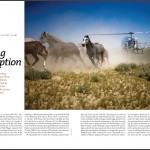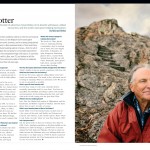 Cold Case Download PDF
Cold Case Download PDF
A new team sets out to solve old disappearances.
On Thursday, October 26, 1944, 12-year-old Frank Jacobs did what he always did when school got out: He walked a half-mile to the Manhattan Beach pier, where he liked to fish for halibut. Jacobs settled in a spot on the pier’s north side, which gave him a view of aircraft departing from Mines Field (now Los Angeles International Airport), about three and a half miles south. He loved catching a glimpse of an American fighter.
Airplanes departing Mines usually head west, over the bay. And that autumn afternoon was no different: Jacobs noticed the roar of a single-engine airplane climbing over the water. Though the boy built balsawood models of aircraft used in World War II, he could not identify this airplane. But he suspected it was a P-51 Mustang. Continue reading









